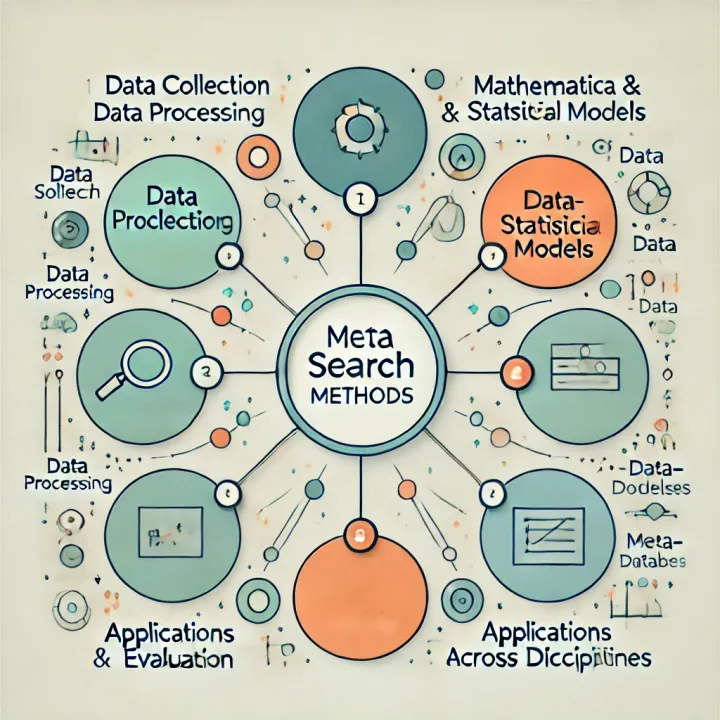What are the key sections included in the reporting of a meta-analysis?

Here are the key sections typically included in the reporting of a meta-analysis:
- Title: The title should clearly indicate that the paper reports a meta-analysis and, if applicable, a research synthesis. For better indexing, the term "meta-analysis" should be included in the title.
- Abstract: The abstract should succinctly summarize the key aspects of the meta-analysis, including:
- The objectives and research questions addressed.
- Eligibility criteria for study selection.
- Participant characteristics.
- Methods used for the meta-analysis (including whether a fixed or random effects model was employed).
- Main findings (including important effect sizes and moderators).
- Conclusions drawn from the results.
- Introduction: This section establishes the context and rationale for the meta-analysis. It typically includes:
- A description of the research problem or relationship being investigated.
- A justification for the need for a meta-analysis, highlighting any uncertainties or discrepancies in the existing literature.
- A clear statement of the research questions or hypotheses being addressed.
- Method: This section provides a detailed account of the methodology employed in the meta-analysis, enabling readers to evaluate the study's rigor and reproducibility. Key subsections within the method section include:
- Study Selection Criteria: This outlines the criteria used to determine which studies were included in the meta-analysis. These criteria should be comprehensive and well-defined, addressing aspects such as:
- Participant characteristics (e.g., age, gender, diagnosis).
- Study design (e.g., randomized controlled trials, observational studies).
- Intervention or exposure of interest.
- Outcome measures.
- Publication date range.
- Language restrictions.
- Search Strategy: A comprehensive description of the search process is essential for transparency and reproducibility. This subsection should detail:
- Databases searched (e.g., PubMed, Embase, PsycINFO).
- Search terms and strategies employed, including Boolean operators and any limits applied.
- Date ranges covered by the searches.
- Any supplementary search methods used (e.g., reference list checking, hand-searching of key journals, grey literature searches).
- The number of records identified and screened at each stage of the process.
- This information can be effectively presented using a PRISMA flow diagram.
- Data Extraction: Describe the process of extracting data from the included studies. This includes:
- The variables extracted (e.g., sample size, effect size, study characteristics).
- The methods used to calculate effect sizes, particularly when data needed to be reconfigured or aggregated from the original studies.
- The number of coders involved and how discrepancies were resolved.
- Any quality assessment tools used to evaluate the methodological rigor of the included studies.
- Statistical Analysis: Outline the statistical methods used to analyze the data. This includes:
- The model used to combine effect sizes (e.g., fixed-effect or random-effects model).
- Methods for assessing and quantifying heterogeneity (e.g., Q statistic, I2 index).
- Methods for assessing publication bias (e.g., funnel plot, Egger's test, trim-and-fill method).
- Any subgroup analyses or meta-regressions performed to explore potential sources of heterogeneity.
- Software used for the analyses.
- Definitions of any statistics reported.
- Study Selection Criteria: This outlines the criteria used to determine which studies were included in the meta-analysis. These criteria should be comprehensive and well-defined, addressing aspects such as:
- Results: This section presents the findings of the meta-analysis. Key elements include:
- Descriptive Statistics: Summarize the characteristics of the included studies (e.g., publication year, sample size, study design, intervention type) and their effect sizes.
- Overall Effect Size: Report the estimated overall effect size and its confidence interval.
- Heterogeneity: Present the results of heterogeneity assessments, including the Q statistic and I2 index.
- Publication Bias: Report the findings of publication bias assessments, such as funnel plot asymmetry and the results of statistical tests.
- Moderator Analyses: Present the results of subgroup analyses and/or meta-regressions, including effect size estimates for subgroups and the significance of moderator variables.
- Additional Analyses: Report any sensitivity analyses or explorations of missing data.
- Visualizations: Use tables and figures to present the results clearly and effectively. Common visualizations include forest plots, funnel plots, and bubble plots.
- Discussion: Interpret the findings of the meta-analysis in the context of the existing literature and theoretical framework. This section should:
- Summarize the main findings, including the overall effect size, heterogeneity, and moderator analyses.
- Discuss the implications of the findings for theory, practice, and policy.
- Relate the results to previous research and identify any consistencies or inconsistencies.
- Address the strengths and limitations of the meta-analysis, including potential biases and methodological challenges.
- Provide recommendations for future research, highlighting areas where further investigation is needed.
- References: List all references cited in the meta-analysis, preferably marking those included in the analysis.
- Concluding Remarks: The authors can offer final thoughts and emphasize the significance of the findings.
- Appendices: Include supplementary materials that may be too lengthy or detailed for the main text, such as full search strategies, coding protocols, and data extraction forms.
It is also important to note that several reporting guidelines have been developed to enhance the quality and transparency of meta-analyses. These guidelines, such as PRISMA, MARS, MOOSE, and REGEMA, provide detailed recommendations for each section of a meta-analytic report, ensuring that all essential information is included and presented in a standardized manner.
Remember that transparency and reproducibility are paramount in meta-analytic reporting. Providing a clear and comprehensive account of all decisions and procedures strengthens the credibility of the findings and facilitates knowledge accumulation in the research field.




Comments ()